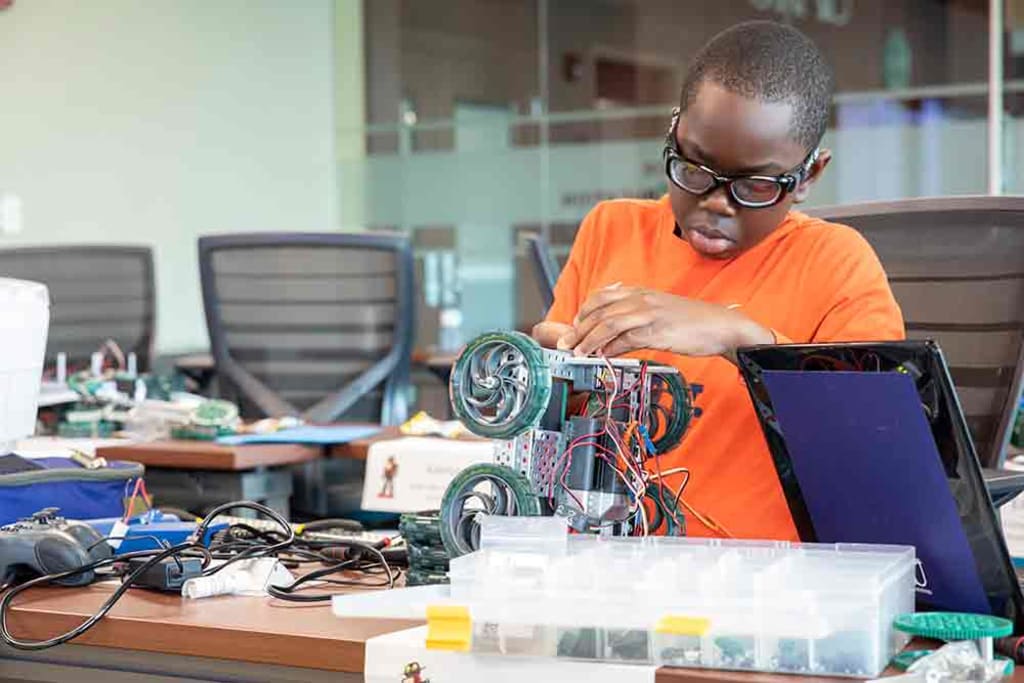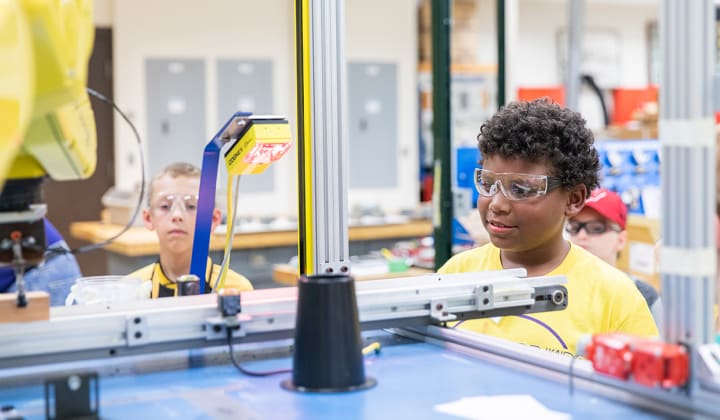Synthesis for STEM-focused Research
A Guide for Integrating STEM Education in Schools

Synthesizing STEM research can be a very difficult process for many educators. As with any type of research, we know that it takes time and often requires school teachers and administrators be to strategic in reading and interpreting many texts. Although it may be a difficult process, it works best at preparing teachers to learn and incorporate STEM in the classroom. I have listed some common themes around STEM education as well as the research that binds them together.
We must encourage minority students to pursue STEM careers .
Over the years, STEM careers have been increasing in the U.S. One of the many obstacles we're facing is finding people who are qualified to fill these positions. This is especially true in minority communities.

Underrepresented minority students are faced with an even more frequent dilemma, the lack of STEM education. The lack of stem-related resources has decreased the chances of minorities learning STEM and going into the field. However, many employers are making an effort to partner with schools to provide STEM education to students who have not been able to receive it in the past.
Great efforts are being made to address the need of underrepresented students in STEM related careers. Not only that, but these same students must be equipped with the necessary skills to perform technical jobs beofre they are released into the workforce(Verma, Dickerson, & McKinney, 2011). By providing STEM related opportunities to underrepresented communities, our workforce is becoming more sustainable for economic growth (Banks, 2012) .
We must prepare teachers to be both effective and flexible practitioners.
When it comes to teaching STEM, it is important to know that each school is different (Teo & Ke, 2014, p. 23). Teachers must also consider integrated STEM slowly into their classroom as it is a robust subject for some students. Many schools are developing curriculum that already incorporates some STEM topics. This makes it easier for Teachers to get students excited about learning.

The struggle with teaching STEM is not the content itself, is the lack of teacher preparation and training. Most times, teacher preparation programs focus solely on preparing the teacher for the classroom environment, but drops the ball in preparing them to teach rigorous content, specifically STEM. In order for students to use a higher level of thinking, we must have educators who highly qualified to lead students in that direction. Like teacher like students. If the teacher creates an environment that is conducive to high academic achievement, then the students will try their best meet or exceed those same expectations. Of course, you will have a few students that will need additional support, but more than likely, most students will jump on board. In the 21st century, teachers have be flexible. They must exceed the norm. So many educators are still in the dark with STEM education.

Evidence has shown that teacher preparation programs alone, are not adequate enough to prepare teachers to be be STEM practitioners. researched has suggested that teachers should also engage in professional development and continuing education opportunities so they are more equipped to meet the needs of their students (Nadelson et. al, 2013, p. 158).
STEM education must be diversified and equitable for all students
One of the most significant advancements in our economy is the increase of minorities joining the workforce especially in areas of science, technology, engineering, and mathematics. A big thanks goes to diversity in STEM education. Diversity is a big deal in most workplaces, the same should exist in our schools. Evidence has shown that students are not receiving an equitable amount of science and engineering instruction. This has a lot to do with the quality of STEM education offered in minority schools.
Although we are making great strides in diversifying STEM, We must take action. We are aiming to increase the awareness of diversity issues in our educational institutions and create a strategy for implementing this change right away.

By tackling these issues head on, we can develop a plan to fill in the educational gap and provide support for schools that are not up to par. I am confident that the more we equip our practitioners, the closer we'll get to providing equitable STEM education for all.






Comments
There are no comments for this story
Be the first to respond and start the conversation.